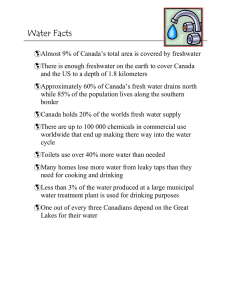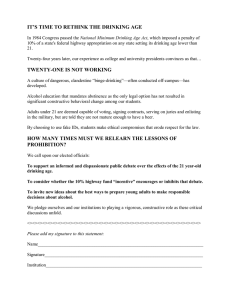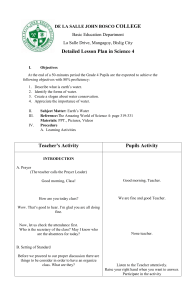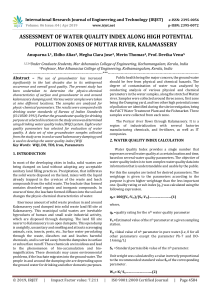Water, Water Everywhere?!? Science Standard
advertisement
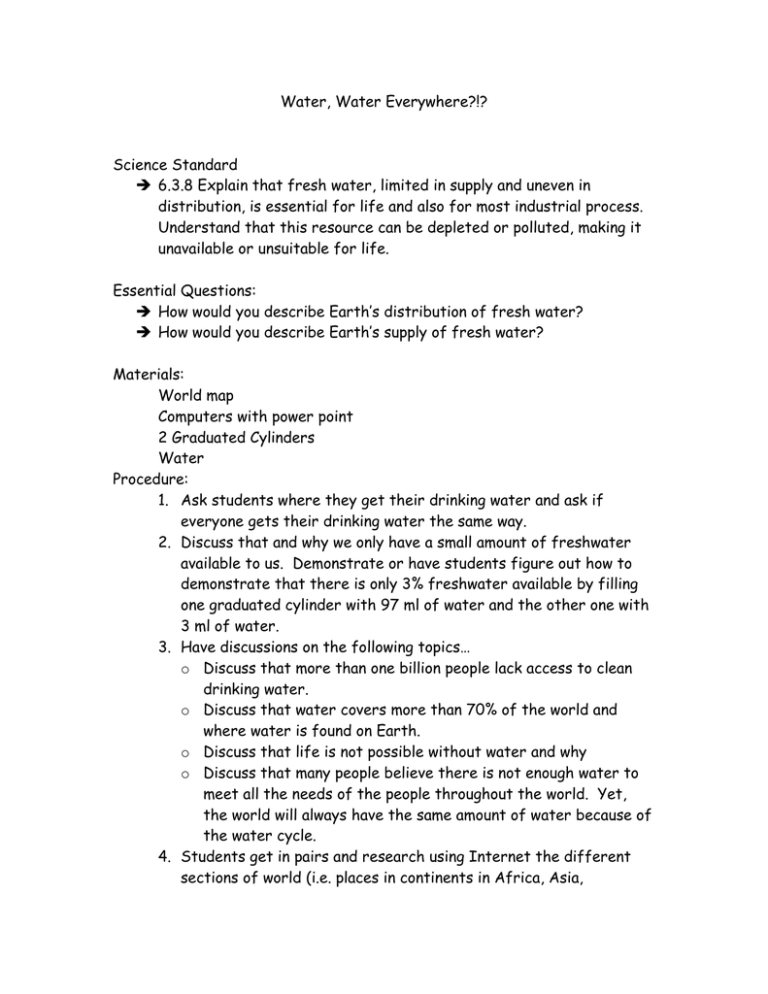
Water, Water Everywhere?!? Science Standard 6.3.8 Explain that fresh water, limited in supply and uneven in distribution, is essential for life and also for most industrial process. Understand that this resource can be depleted or polluted, making it unavailable or unsuitable for life. Essential Questions: How would you describe Earth’s distribution of fresh water? How would you describe Earth’s supply of fresh water? Materials: World map Computers with power point 2 Graduated Cylinders Water Procedure: 1. Ask students where they get their drinking water and ask if everyone gets their drinking water the same way. 2. Discuss that and why we only have a small amount of freshwater available to us. Demonstrate or have students figure out how to demonstrate that there is only 3% freshwater available by filling one graduated cylinder with 97 ml of water and the other one with 3 ml of water. 3. Have discussions on the following topics… o Discuss that more than one billion people lack access to clean drinking water. o Discuss that water covers more than 70% of the world and where water is found on Earth. o Discuss that life is not possible without water and why o Discuss that many people believe there is not enough water to meet all the needs of the people throughout the world. Yet, the world will always have the same amount of water because of the water cycle. 4. Students get in pairs and research using Internet the different sections of world (i.e. places in continents in Africa, Asia, Antarctica, Europe, North and South America) and find out where they get their drinking water. 5. Students do an electric presentation (power point) to present their findings with pictures and words by answering the following questions. Where does the drinking water come from in the area? How do they obtain their drinking water? Is the water limited? If the water is limited, then how does it affect the land, people, and animals? 6. On the classroom bulletin board have a world map for the students to record findings about the distribution and supply of fresh water. 7. Take a field trip to local water treatment plant. Assessment: Rubric of presentation
